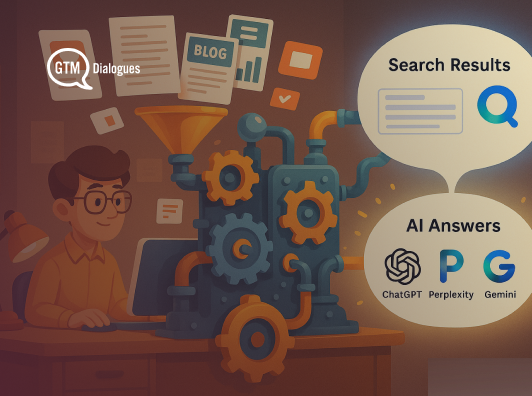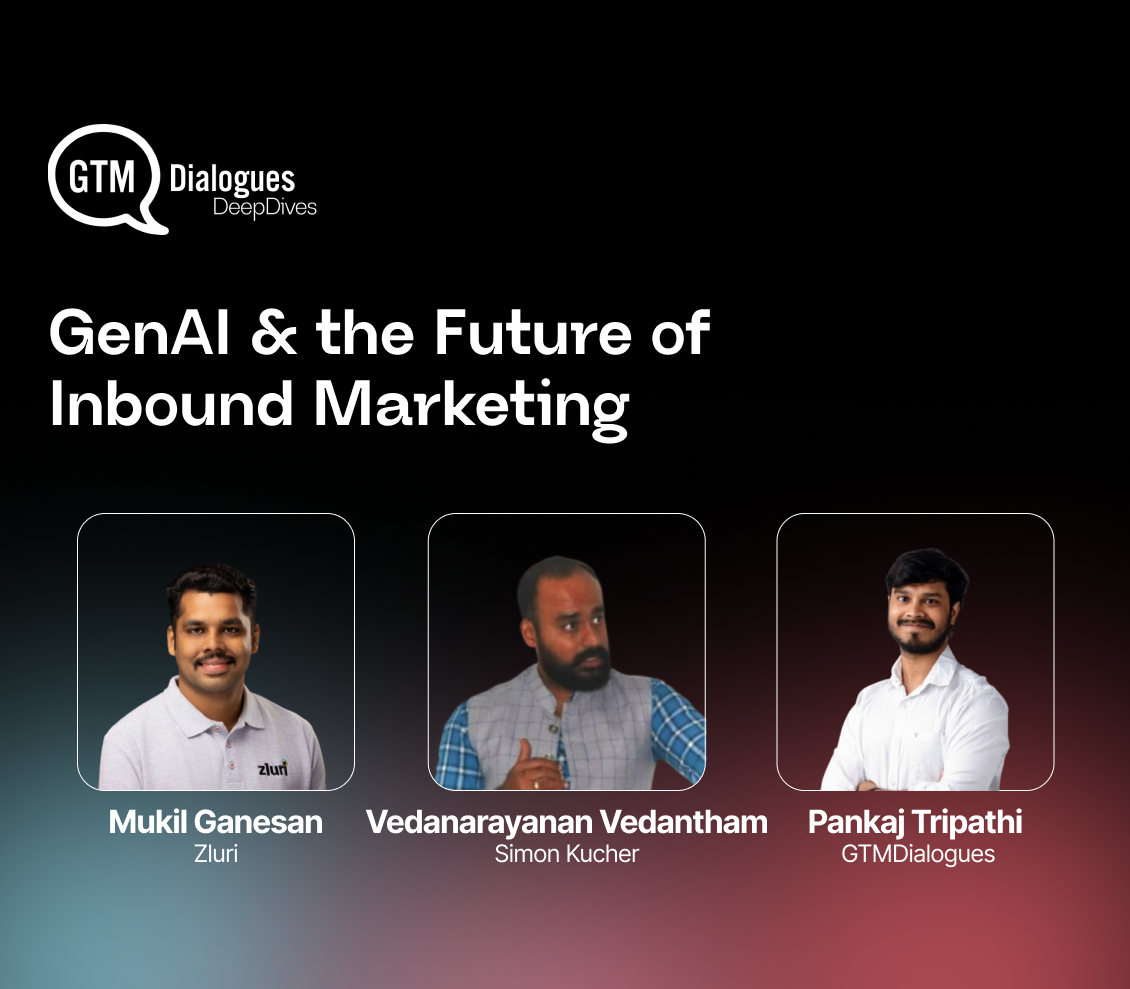Generative AI tools like ChatGPT, Perplexity, and Claude are rapidly changing how users find and consume information.
They don’t send traffic, they deliver answers. And to do that, they scan, chunk, and cite from sources they trust.
That means your content is no longer just a web page. It’s a dataset. A knowledge node. A potential citation in someone’s AI-generated research, buying journey, or strategy memo.
But AI simply doesn’t reuse everything it reads. It picks clean, self-contained, high-signal chunks, then ignores the rest.
If you want your content to show up in AI search results, you need to structure it for discovery, reuse, and recommendation. The good news? You don’t need to rewrite your strategy. You just need to systematize your approach.
This article gives you a 7-step framework to do exactly that. Follow these steps to make every blog post, product page, and guide ready for the next wave of content distribution.
Step 1: Write Summaries and Deep Dives for AI Indexing
Every section should offer two layers of content, one for fast extraction, one for detailed reuse.
This makes your article useful in both answer snippets and in-depth responses surfaced by AI tools.
Here’s how to structure it:
i) Start with a summary
Open the section with a clear 1–2 sentence takeaway. Avoid fluff. Explain what this is and why it matters in plain language.
ii) Follow with supporting detail
Add examples, reasoning, or step-by-step logic. Give the reader (or AI tool) enough context to reuse the section in full.
iii) Make it self-contained
Avoid linking ideas across sections with phrases like “as mentioned above.” Treat each block like its own reusable module.
iv) Use formatting that reinforces this structure
Italics or bolding can help mark summary lines. Lists, short paragraphs, and separators keep it readable.
Why it matters?
AI tools don’t scan full articles linearly. They chunk content and look for blocks that answer questions independently. When your content includes both a summary and deeper explanation, you give it two chances to be reused: one for direct answers, another for full citations.
Step 2: Add Original Signals That AI Can’t Hallucinate
AI tools are trained on billions of generic blog posts. If your content blends into that noise, it won’t stand out, or get cited. What catches AI attention is anything that signals originality and trust.
Here’s what to include:
i) First-party data
Share internal experiments, benchmarks, or anonymized performance metrics, anything that’s not available elsewhere.
ii) Real quotes from real people
Attribute statements to founders, team members, customers, or experts. Always include names, roles, and context.
iii) Screenshots and use-cases
If you’re referencing a product workflow or test result, show it visually or walk through a real scenario.
iv) Contrarian takes with proof
If your approach differs from the norm, document the results. Show how it worked, not just what you believe.
v) Time-stamped examples
AI models learn to favor content with clear context - what happened, when, and to whom.
Why it matters?
LLMs are excellent at rephrasing the internet but they struggle to invent specificity. If your content includes something AI can’t fake or fabricate, it becomes a stronger candidate for reuse. These signals also make your content more credible to both human readers and machines trained to value evidence over opinion.
Step 3: Use Clear Subheadings with Proper Hierarchy
Subheadings do more than break up text. They help AI tools map your logic, identify topical chunks, and classify your content by theme. Sloppy or vague headers weaken your structure, and reduce your chances of being indexed properly.
Follow these practices:
i) Use H2s for primary sections and H3s for subsections
Keep the hierarchy clean and logical. Avoid going below H4s.
ii) Write headers like labels, not teasers
Say exactly what the section is about. Avoid vague phrasing like “Our thoughts” or “Why this matters.”
iii) Start with keywords or topic phrases
Begin each subhead with the subject, not a build-up. For example, “Improve Reuse with Chunked Content” works better than “One More Thing About Formatting.”
iv) Maintain consistency throughout the page
Don’t switch from statement headers to question headers midway. Pick a format and apply it uniformly.
v) Think in outline form
If your headers were the only thing visible on the page, would a reader (or AI) understand what your article covers?
Why it matters?
AI tools depend on structure to extract and reassemble content accurately. Clear, well-scoped subheadings help them recognize where one idea ends and another begins. The better your headings, the more likely your content is to be chunked, cited, and reused, without misinterpretation.
Step 4: Break Your Content Into Standalone Chunks
AI tools don’t extract entire articles, they pull fragments. Each section must stand on its own, without relying on context from previous or later paragraphs. If your content depends on “as mentioned above” or “see below,” it’s not chunk-ready.
Here’s how to structure self-contained blocks:
i) Keep each section focused on one idea
Don’t mix arguments or rely on build-up. Say it clean, say it once.
ii) Avoid internal references
Phrases like “as discussed earlier” confuse AI tools and fragment reuse.
iii) Use short paragraphs with 2 to 4 lines max
Large blocks of text are harder to scan and chunk.
iv) Include bulleted lists, mini-summaries, or takeaway boxes
Use these elements when explaining steps, comparisons, or frameworks. They increase clarity and lift citation potential.
v) Repeat context if needed
It’s okay if the same background appears in multiple sections. Redundancy improves standalone readability.
Why it matters?
Content that’s tightly scoped and independently readable is easier for AI tools to extract, classify, and repurpose. If a reader or AI copies your section into a different context like a chatbot response or a third-party summary, it should still make complete sense. Think of every block as a flashcard, not a paragraph in a novel.
Step 5: Attribute Every Quote, Stat, and Opinion
AI tools rely on attribution to assess credibility. If your content includes unnamed claims, unlinked data, or floating opinions, it’s less likely to be cited, or trusted.
To build trust with both readers and machines, attribute everything that isn’t common knowledge.
i) Cite external stats with links, source names, and dates
Don’t just say “According to a report…” specify who published it and when.
ii) Tag internal insights with names and roles
Instead of saying “Our team believes…,” write: “Example, Co-founder at Example.com, says…”
iii) Link original research and case studies
If you’re referencing benchmarks or surveys, make sure the source is verifiable and ungated.
iv) Include screenshots or quotes from real users
Visual evidence and first-hand voice help anchor your point in reality.
v) Clarify opinion vs observation
If it’s your perspective, say so. If it’s based on something measured or observed, say where.
Why it matters?
Attribution makes your content reusable. AI tools prefer quoting material that can be traced back to a human, a source, or a dataset. Without attribution, you miss the opportunity to become “the voice” behind the insight, even if the point is valid. Names, titles, and links turn general content into reference material.
Step 6: Keep Messaging Consistent Across Platforms
Your blog doesn’t live in isolation. AI tools cross-reference your content across LinkedIn posts, Quora answers, Reddit threads, and third-party guest articles. If your positioning is inconsistent across these surfaces, you weaken your credibility, both to readers and to machines.
Ensure alignment in these key areas:
i) Your audience definition
Speak to the same segment everywhere. If your blog targets mid-market SaaS founders, don’t shift to enterprise marketers on LinkedIn.
ii) The pain points you address
Repeating the same core problems reinforces your brand as a domain expert. Avoid reinventing your narrative for every channel.
iii) The language you use
Keep terminology consistent. Product labels, frameworks, and taglines should stay the same across your site and social presence.
iv) Your proof points
Use the same examples, customer quotes, and outcomes wherever possible. This builds pattern recognition in AI systems.
v) Your POV
If you take a stand on something, repeat it. AI tools interpret repetition across domains as a signal of reliability.
Why it matters?
Consistency increases authority. When AI tools detect matching themes, examples, and language across platforms, they treat your content as more trustworthy and easier to cite. In a fragmented web, repetition isn’t redundancy, it’s reinforcement.
Step 7: Use Semantic HTML and Structured Metadata
Even the best content can get ignored if it’s technically unreadable. AI tools rely on clean structure, semantic markup, and machine-readable signals to identify and extract content accurately. If your formatting is broken, inconsistent, or overly stylized, you limit your visibility.
To build a strong technical foundation:
i) Use semantic HTML tags properly
Stick to one H1 per page (the title), followed by H2s and H3s in logical order. Don’t style subheads manually using bold text. Use heading tags.
ii) Include llms.txt to invite AI crawlers
Similar to robots.txt, this file allows you to opt in to indexing by AI tools like Perplexity and OpenAI.
iii) Implement schema.org markup
Use structured data for articles, FAQs, how-to guides, reviews, and events. This helps AI classify your content beyond just text.
iv) Use canonical tags to prevent duplication
If your content appears on multiple URLs, clearly indicate the original version to avoid being penalized or overlooked.
v) Add alt text to all images and diagrams
This improves accessibility, and helps AI tools interpret visuals in context.
Why it matters?
Your content won’t get reused if it can’t be parsed cleanly. Semantic HTML and structured metadata create the scaffolding AI tools depend on to understand what your page is, what each section means, and where it fits into broader queries. Good content without good structure is invisible.
Finally, Treat Every Page as a Structured Data Source
Generative AI has shifted how content is discovered, trusted, and reused. It’s no longer enough to rank for keywords, you need to structure your content for AI systems that extract insights, not just index pages.
The seven steps you’ve just read form a repeatable checklist:
- Write summaries and deep dives
- Add original, non-hallucinateable signals
- Use clear headers with proper hierarchy
- Break content into standalone chunks
- Attribute everything you claim or quote
- Keep messaging consistent across platforms
- Use semantic HTML and structured metadata
This framework won’t just improve AI visibility. It’ll make your content easier to scan, cite, and trust by both machines and humans.
Start applying it to your new pages. Then slowly retrofit your best-performing posts. The payoff is cumulative, and long-term.
If you want help in making your content AI-indexable, talk to us. We’ll audit your content, identify citation gaps, and build a repeatable framework tailored to your niche.
Frequently Asked Questions
Is AI search the same as Google SEO?
Not really. SEO optimizes for click-throughs and rankings. AI search optimizes for citation and reuse. You’re not just competing for page views, you’re competing to be the source.
How can I tell if my content is being reused by AI tools?
Use Perplexity and ChatGPT to ask questions your content answers. If you see your copy quoted or linked, it’s working. You can also track citations from tools that show source URLs.
Does semantic HTML really make a difference?
Yes. Poorly structured pages, those with bolded subheads instead of H2s, for example, are harder for AI to chunk and classify. Structure is non-negotiable.
What if my topic has been covered hundreds of times before?
That’s exactly why you need original thinking - quotes, screenshots, data, and outcomes. Generic content blends in. Specificity gets reused.
How often should I update older content to match this framework?
Start with your top 10 performing pages. Add summaries, tighten up structure, and insert original signals. Don’t overhaul everything at once, prioritize what’s already driving traffic.














